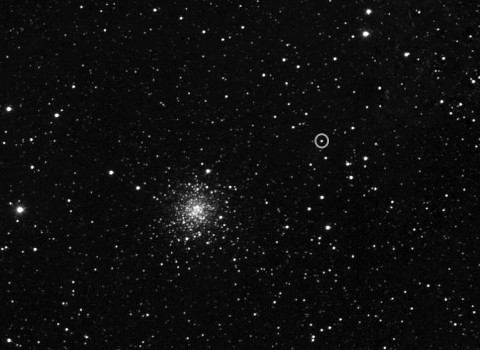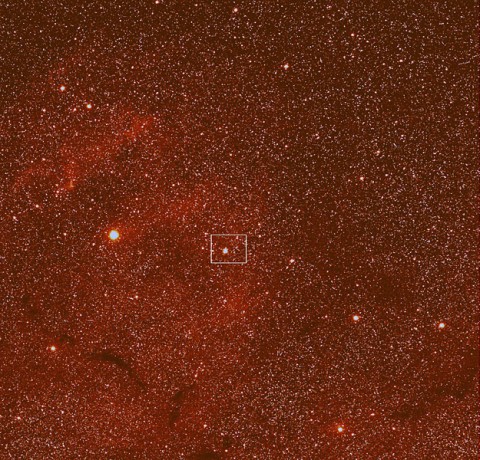Written by DC Agle
NASA’s Jet Propulsion Laboratory
 Pasadena, CA – The Rosetta spacecraft has caught a first glimpse of its destination comet since waking up from deep-space hibernation on January 20th.
Pasadena, CA – The Rosetta spacecraft has caught a first glimpse of its destination comet since waking up from deep-space hibernation on January 20th.
The first images of comet 67P/Churyumov-Gerasimenko were taken on March 20th and 21st by the Optical, Spectroscopic and Infrared Remote Imaging System (OSIRIS) wide-angle camera and narrow-angle camera. Rosetta is an international mission spearheaded by the European Space Agency with support and instruments provided by NASA.

The imaging of 67P/Churyumov-Gerasimenko is part of six weeks of activities dedicated to preparing the spacecraft’s science instruments for close-up study of the comet. Rosetta has been traveling through the solar system for 10 years, and will arrive at the comet 67P/Churyumov-Gerasimenko in August of this year.
Rosetta was reactivated January 20th after a record 957 days in hibernation. The three U.S. instruments aboard Rosetta are the Microwave Instrument for the Rosetta Orbiter, Alice (an ultraviolet imaging spectrograph) and the Ion and Electron Sensor.
 ESA member states and NASA contributed to the Rosetta mission. Airbus Defense and Space built the Rosetta spacecraft. JPL manages the US contribution of the Rosetta mission for NASA’s Science Mission Directorate in Washington. JPL also built the Microwave Instrument for the Rosetta Orbiter and hosts its principal investigator, Samuel Gulkis.
ESA member states and NASA contributed to the Rosetta mission. Airbus Defense and Space built the Rosetta spacecraft. JPL manages the US contribution of the Rosetta mission for NASA’s Science Mission Directorate in Washington. JPL also built the Microwave Instrument for the Rosetta Orbiter and hosts its principal investigator, Samuel Gulkis.
The Southwest Research Institute in San Antonio developed the Rosetta orbiter’s Ion and Electron Sensor (IES) and hosts its principal investigator, James Burch. The Southwest Research Institute in Boulder, CO, developed the Alice instrument and hosts its principal investigator, Alan Stern.
For information on the U.S. instruments on Rosetta, visit: http://rosetta.jpl.nasa.gov
More information about Rosetta, visit: http://www.esa.int/rosetta
For more information on the DSN, visit: http://deepspace.jpl.nasa.gov/dsn


